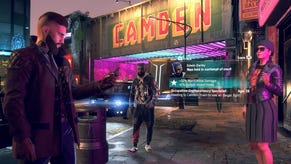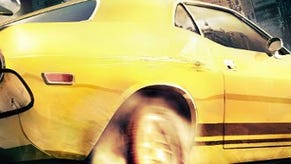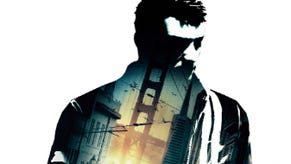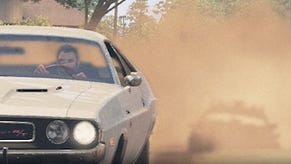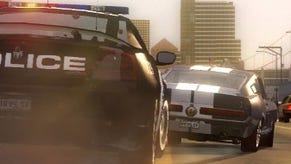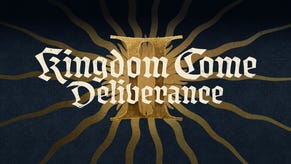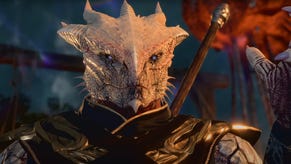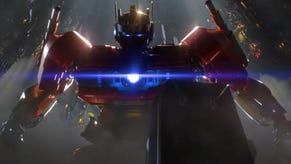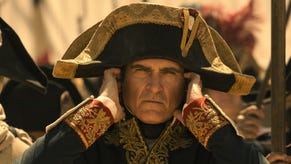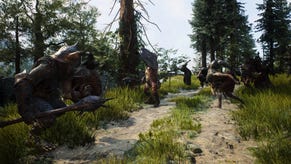Hands-on preview: Driver: San Francisco
So. The secret's out - Driver: San Francisco is coming, and it's coming this holiday season for PS3, 360, PC and Mac, with a separate Wii title on the way.
VG247 were in Newcastle at Ubisoft Reflections two weeks ago to check out the game before its reveal at Ubisoft's press conference earlier tonight.
But could this be the return Driver has desperately been needing since Driver 3? Hit the jump.
Also, check out our interview with creative director of the game, as well as creator of the series and Reflections founder, Martin Edmondson here.
[All text by Johnny Cullen]
Reflections has gone through a rough couple of years since the release of Driver 3. It’s fair to say its taken a bit of a kicking. Parallel Lines in 2006 made the series a little better but after Driver 3, that really isn’t saying much, is it? The damage was pretty much done. But it’s a new start: with Ubisoft, not Atari, now in charge of the IP and the studio, it’s change with a sense of familiarity around it.
Welcome to San Francisco, Driver style.
To begin with, Driver: San Francisco takes place months after the end of Driver 3 (I’m not doing that Driv3r thing). If you completed Driver 3, you’d have seen both series regulars Tanner and Jericho in an Istanbul hospital: Jericho shot Tanner after a massive chase through the Turkish capital, with the latter flat lining in said hospital. Nothing was made clear of if he ever survived.
But he did. And so did Jericho. Not a massive lot of the story was discussed at Reflections during a brief 30 minute presentation by Reflections founder Martin Edmondson other than the characters returning, but one massive golden nugget was dropped. But more on that in a bit. As we begin, Tanner is in the hot-seat of a Dodge Challenger as you try following his partner Tobias Jones in a Porsche 911.
That’s right; Driver now has real-life licensed cars. 120 licensed cars to be exact, a first in the series, although only 20 were included in the demo as they were the ones officially confirmed for the game at the time. Some of these include Fiat 500s, DeLoreans, McLaren F1s, Bugatti Zondas and more.
As I attempt to follow Jones, Edmondson points me down to an alleyway. He tells me to stop in the alley, and this is where the megaton comes in. At some point in the game after a car crash – Edmondson didn’t go into details as to what exactly caused it - Tanner goes into a coma.
Because of the fact you are in said coma, you’ve gained the ability to use a new feature that’s not just new to the Driver series, but also a first for the open-world genre, known as Shift: something we’re introduced to once we pull into the alley. Shift allows you to basically jack any car you like that you see around San Fran by just pressing X, putting a reticule on it and pressing X again (the build we played was on PlayStation 3) and boom: you’re driving the car that you picked, all without actually getting out of the car on foot.
To keep players in the action during missions, you can use rapid Shift by using Square to keep Tanner in the rapid-pace action.
In fact, during this coma, Tanner thinks he’s picked up this super-human ability to take over people driving cars, thinking he’s actually had a lucky escape. You see, with him actually in the coma, it’s not him actually driving the car.
“When you Shift into a vehicle, you’re not just shifting into a metal box, you’re not just shifting into a vehicle and driving that vehicle,” said Edmondson in the demonstration.
“The vehicles are occupied by people, and when Tanner shifts into a car, he actually shifts into the person that is in that car. And he takes over that person. So there’s a passenger in the car, they’re not aware of anything having changed.
“They’re aware of their dad, their wife, their husband or whoever it is that’s sat in the driver’s seat may have started driving a bit crazy, but it’s still the person that they knew before, which opens up some interesting dialogue between the characters.”
But the player still “sees Tanner” to “maintain” a “constant connection” with the person playing the game.
Shift will cover the entire San Francisco area as well. For example, when you enter the mode, you basically see what’s happening on the street or road you are looking at. Pull back on R3 once and you see what must be an entire block. Pull back on R3 a couple of times and you get a full view of the city. Push forward on the right analog stick again on whatever area the reticule is on, and you will zoom straight into that area. You don’t get a full view of the city at first, but as you upgrade Shift as the game progresses, you’ll be able to.
It must be said, though, that it isn’t something that is a feature you can use unlimited. Another thing we should point out related to Shift is that there’s now a damage bar. Instead of damaging your car and it blowing up, effectively killing you inside, it takes you out of the car and takes you back into Shift to pick another car.
Driver 3 and Driver: Parallel Lines out-of-car experience wasn’t exactly a great one, but Reflection’s have taken lessons to heart over what D3 did, as Edmondson told us in an interview you can read here. But Shift is “a unique and original breakthrough” for the genre, according to him. And from the time we had with it, it we can honestly say you may start making a big deal about this.
But while Shift is the big massive thing in Drive: San Francisco, and with several returning key characters coming back for the game, Reflections does realise it needs to go back to its roots, including a rewritten physics model for Driver: San Francisco, as well as handling that’s similar to the original Driver.
So with Shift eliminating on-foot action in the game, the series has now returned to the racing feel that the first two titles in the series was well-known for, inspired by massive chase scenes in movies like Bullitt starring Steve McQueen, French Connection and the recent remake of The Italian Job, just to name a few.
And while there wasn’t a fair amount of chase scenes in the hands-on time that was had with the single-player portion – it was all about getting to grips with Shift – Edmondson was keen to stress the importance of key features in San Francisco that make chases exciting, things like the hills, the bendy streets, back alleys, busy streets and more. It was pretty much the reason why it was picked as the main location of the game. The heritage of those chase scenes in Hollywood movies really sends it home.
It’s also good timing, then, that Reflections has decided to bring back the director mode for the game: something which has been synonymous with the series since the beginning of the series, but was left out of Parallel Lines.
“Film Director is an integral part, for me, of the whole Hollywood car chase experience” says Edmondson. “It wasn’t in Driver 4, it didn’t feature the Film Director, but we’ve brought it back in an easier to use form in Driver: San Francisco to be able to create your own car chase movies.
“And it’s really good fun to mess about with,” he further adds. “A game like this is screaming out for that sort of feature because of the film style of the environment that we’re in and the types of cars and so on.
He was also emphasised that Driver San: Francisco was all about driving with four wheels. Simply put: no bikes and no boats in this one. But there will be buggies for the dirt tracks, which weren’t in the playable demo.
But there’s another first for the series as well: multiplayer. Split-screen and online multiplayer will be added to the game. Nine modes will be included with the final game, with two to six players bringing in the ranks. Only one mode was tried at Reflections, though, known as Trail Blazer, where players much slip in behind the slipstream of an AI controlled car to get points. First to get 100 points wins the round.
From what was played of Trail Blazer, it was seriously a hell lot of fun. It felt like old-school Driver, and then some.
Also included for Driver San Francisco’s multiplayer will be an XP system for players to level up. Oh, and it will all be Shift-based.
While it is understandable to be very cautious about a new Driver title these days – once bitten, twice shy, after all – there is some optimistic hope about San Francisco and its 208 miles of drivable roads. Tanner’s return, the introduction of Shift, San Fran itself, multiplayer and more. This is just the tip of the iceberg.
It still has a long way to go before its release this holiday season, but the first signs are good. Very good, in fact.
Let’s just hope that it pays off in the long run.
Driver: San Francisco releases this holiday season for PlayStation 3, Xbox 360, PC and Mac. A separate Wii title will also be released at the same time. For our interview with Reflections’ Martin Edmondson, click here.


